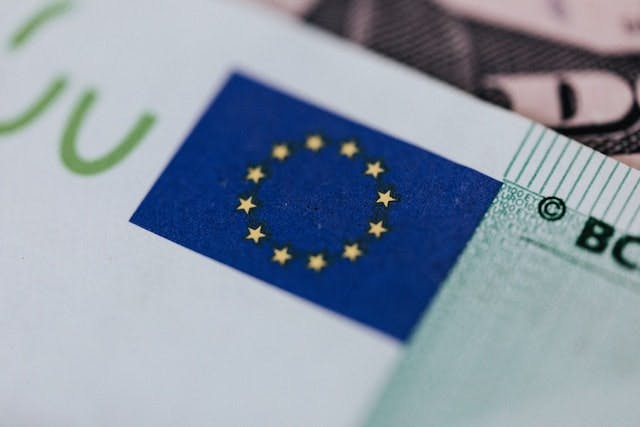
What are the 3 Pillars of Corporate Sustainability?
In this article, we'll explore what the 3 pillars of corporate responsibility are, why they're important, and how businesses can turn them into practical action.
ESG / CSR
Industries



The European Union (EU) has taken sustainability and climate change seriously for quite some time, having joined the net-zero movement and implemented financial disclosure requirements through the NFRD and the CSRD, but the E.U. isn't stopping there. In 2021 the European Union implemented the Sustainable Finance Disclosure Regulation – otherwise known as the SFDR - putting EU sustainable finance back in focus.
As shown with previous disclosures implemented in the EU, the bloc has made it clear that they view redirecting capital flow as the most viable method for creating a more sustainable society.
👉 So how exactly does the SFDR help to improve the transparency and sustainability of businesses within the European Union?
The regulation demands a detailed disclosure with regards to the sustainability factors (or the sustainability risks) of financial products, and also requires various ESG principles, otherwise known as environmental, social, and governance principles to be reported as well.
The SFDR was recently revised in order to require more detailed disclosures to align with the European Union's Sustainable Finance Agenda. This agenda is a way for the European Commission to fund economic activities with environmental and social characteristics that ultimately contribute towards sustainable growth in the EU and help the bloc reach carbon neutrality by 2050.
The SFDR is a pivotal component of this as it will economically benefit businesses while simultaneously reducing emissions.

Even though the European Union can implement regulations to ensure that all member states meet a minimum standard, discrepancies in both financial and sustainability efforts will continue to differ throughout the continent – the main goal of the SFDR is to prevent inconsistencies between disclosures from financial market participants with regards to their financial products.
Under the SFDR, firms must provide both entity and product-level disclosures detailing their integration of sustainability risks, sustainable investment objectives and the promotion of environmental or social factors.
The regulation is a key component to the future of sustainability throughout the European Union; it aims to push capital activity towards sustainable endeavours and ultimately, encourages investors and clients to choose companies that support a more sustainable future.
In short, the SFDR acts as an incentive to contribute towards a more sustainable economy. The SFDR does this by requiring companies to report on the sustainability factors of their financial products.
Not only does the SFDR help prevent false claims of sustainability on investment products, but it also provides investors with more detailed information that can help them in their investment decision making process.
Many stakeholders are growing more interested in the environmental impact of their investments and are actively considering the sustainability risk of their investment decisions (when an investors factors in ESG considerations to their investment decision, this is known as ESG investing). Therefore the regulation can help the stakeholder to ensure that their potential investment aligns with their own individual sustainability goals and values.

Asset managers (ie. investment managers) who are required to report under the SFDR must organise their ESG funds and various products into three different “articles” depending on their level of sustainability. These categories are known as article 6, article 8, and article 9.
👉 Note that this reporting requirement includes asset managers who don't promote any sustainability related products or services. Though crucially, any products or services that claim to possess ESG factors will have to provide more in-depth sustainability related information.
Items that fall under article 6 include funds or investments without any sustainability factors. These investments could be stocks geared towards the production of tobacco, coal, or other toxic substances with adverse sustainability impacts. Under the SFDR disclosure requirements, it is compulsory that asset managers mark these funds as non-sustainable.
Funds that do pertain to sustainability fall under either article 8 or article 9, but there's a slight difference between the two. Article 8 funds are products that encourage positive environmental or social activity, whereas Article 9 are products or investments that have clear sustainability goals. Both articles either do little damage to the environment, or are environmentally sustainable.
The SFDR disclosure requirements mandate that financial institutions disclose ESG information for all funds, with the level of disclosure obligations increasing up to Article 9 (ie. article 9 will require additional disclosures vs article 6).

Several other compulsory financial disclosures exist throughout the European Union, such as the Non-Financial Reporting Directive and the Corporate Sustainability Reporting Directive – so, what makes the SFDR different from the NFRD or the CSRD?
The NFRD is another financial reporting directive that applies to companies employing more than 500 people, where they are in possession of over €20 million in assets or have a net turnover of over €40 million euros annually. Those required to report to the NFRD must provide extensive reports on the company's environmental activities such as their rate of carbon emissions, efforts to maintain equality amongst the workplace, their anti-corruption measures, and how well they promote diversity.
The CSRD is a more comprehensive reporting directive than the NFRD – it applies to any company employing more than 250 people, where that company has over €20 million in assets or a net turnover of over €40 million euros annually. In short, the CSRD applies to more companies.
The CSRD also requires more extensive reporting than the NFRD – for example: the CSRD requires that companies demonstrate their sustainability and climate change risks, as well as a more detailed illustration of their contributions to both the environment and society.
Ultimately, what makes the SFRD different from both the NFRD or the CSRD is that it pertains to future investors more than it does to companies. The NFRD and CSRD seek to improve the environmental and social measures within companies, whereas the SFDR strives to help investors to meet any sustainable investment objective they may have when taking investment decisions. Additionally, the SFDR helps to mitigate future investments in unsustainable projects which may have adverse impacts on the environment.
The benefits are clear. The regulation encourages sustainable investments and discourages the flow of capital into financial products with adverse impacts on the environment.
However, this doesn't mean that the SFDR doesn't have room for improvement. The SFDR is relatively user friendly, with the three categories or “articles” making it simple for investors and businesses to understand the requirements of the sustainability related disclosures. But on the hand, these categories are too general and it can often be difficult to determine the negative or positive impacts of each activity, product, or service. Even worse, the lack of clarity between the categories can lead to confusion and miscalculations.
While these labels are said to be under review to improve the future efficiency of the SFDR – it could be a while until they are updated, meaning it's left up to investors and businesses to determine sustainability risks and scope out potential greenwashing by themselves.
This is something the SFDR should aim to refine and take full responsibility for, as investors and businesses alike are not likely to easily decipher the difference between greenwashing and true sustainable efforts.
The good news is that despite the need for improvement for the categories, the SFDR has already seen improvements in sustainability amongst the E.U. market.

So, has the SFDR been successful at improving sustainability in the European Union?
The EU sustainable finance disclosure requirement has had a positive impact on the economy in the E.U. so far – with sustainability related disclosures under article 8 and 9 capturing nearly two thirds of fund inflows in the EU. Ultimately, the SFDR has encouraged businesses throughout the bloc to adopt sustainable development objectives in order to maintain their relevance and keep their competitive advantage.
The SFDR is ultimately a clear and concise step towards EU sustainable finance. The EU sustainable finance disclosure requirement will benefit investors in the future by creating greater transparency in the investment process and preventing greenwashing.
⚠️ At the end of the day, companies that don't adhere to regulations like the SFDR will lose the interest of both customers and investors, who increasingly consider sustainability information in their investment decision making process. These companies will be faced with the choice of becoming obsolete or making real change to their financial products to eliminate sustainability risks.
It's more than likely that the SFDR, alongside the other disclosures in the E.U. Sustainable Finance Agenda, will continue to encourage more sustainable businesses and ultimately – a more sustainable economy throughout the European Union. Passion is good for getting started, but could prove ineffective to keep the momentum of the initial sustainable goals in sight. Regulations like the SFDR will give everyone a nudge who has forgotten the importance of sustainability when it comes to economic activity.
If reading this article has made you interested in reducing your carbon emission to further fight against climate change – Greenly can help you!
Greenly can help you make an environmental change for the better, starting with a carbon footprint assessment to know how much carbon emissions your company produces. Click here